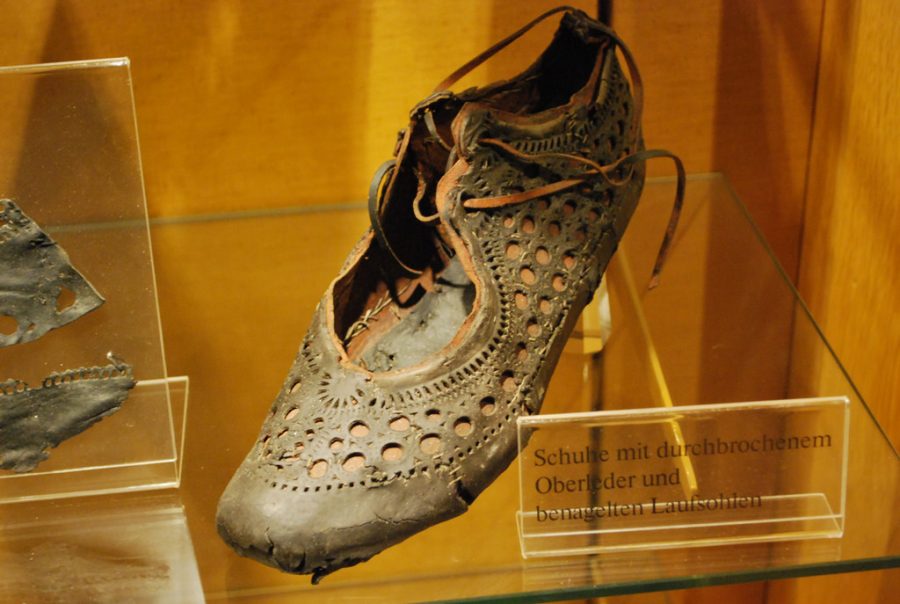
When the Romans pushed their way north into the German provinces, they built (circa 90 AD) The Saalburg, a fort that protected the boundary between the Roman Empire and the Germanic tribal territories. At its peak, 2,000 people lived in the fort and the attached village. It remained active until around 260 AD.
Somewhere during the 19th century, The Saalburg was rediscovered and excavated, then later fully reconstructed. It’s now a UNESCO World Heritage site and houses the Saalburg Museum, which contains many Roman relics, including a 2,000 year old shoe, apparently found in a local well.
If you think the Italians have mastered the craft of making shoes, well, they don’t have much on their ancestors. According to the site Romans Across Europe, the Romans “were the originators of the entire-foot-encasing shoe.” The site continues:
There was a wide variety of shoes and sandals for men and women. Most were constructed like military caligae, with a one-piece upper nailed between layers of the sole. Many had large open-work areas made by cutting or punching circles, triangles, squares, ovals, etc. in rows or grid-like patterns. Others were more enclosed, having only holes for the laces. Some very dainty women’s and children’s shoes still had thick nailed soles.
The image above, which puts all of the Roman’s shoe-making skill on display, comes to us via Reddit and imgur.
Note: An earlier version of this post appeared on our site in July 2016.
Would you like to support the mission of Open Culture? Please consider making a donation to our site. It’s hard to rely 100% on ads, and your contributions will help us continue providing the best free cultural and educational materials to learners everywhere.
Also consider following Open Culture on Facebook and Twitter and sharing intelligent media with your friends. Or sign up for our daily email and get a daily dose of Open Culture in your inbox.
Related Content:
A Huge Scale Model Showing Ancient Rome at Its Architectural Peak (Built Between 1933 and 1937)
A Map Showing How the Ancient Romans Envisioned the World in 40 AD
Rome Reborn: Take a Virtual Tour of Ancient Rome, Circa 320 C.E.
Free Courses in Ancient History, Literature & Philosophy
Watch the Destruction of Pompeii by Mount Vesuvius, Re-Created with Computer Animation (79 AD)
The History of Rome in 179 Podcasts
Elegant 2,000-Year-Old Roman Shoe Found in a Well is a post from: Open Culture. Follow us on Facebook and Twitter, or get our Daily Email. And don't miss our big collections of Free Online Courses, Free Online Movies, Free eBooks, Free Audio Books, Free Foreign Language Lessons, and MOOCs.
from Open Culture https://ift.tt/3qZUnpO
via Ilumina
Comments
Post a Comment